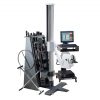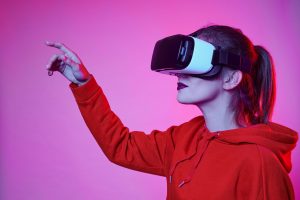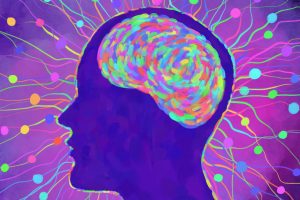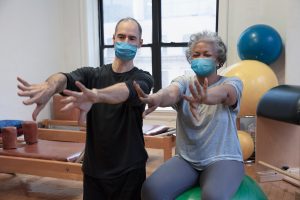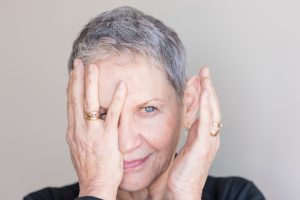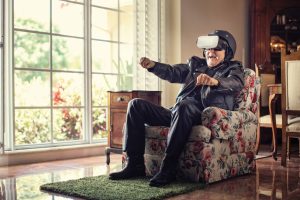
VR Gaming for Stroke: A New Frontier in Rehab
Treatment GuidelinesVirtual reality can improve motor re-learning in stroke patients through repetition of tasks, environmental feedback, and mental imagery. Here's how VR gaming can benefit your patients.
Over 795,000 Americans are affected by stroke each year, making this one of the leading causes of long-term disability.2 Virtual reality, however, is changing the landscape of stroke rehab and revolutionizing the way we view neuroplasticity.
What is Virtual Reality?
A category of interactive gaming, virtual reality (VR) is a technology designed to simulate a three-dimensional environment. This creates a visual setting or scenario that feels authentic to the user.
Utilizing a virtual reality headset, the user can immerse themselves in this 360° atmosphere and participate in a wide variety of activities. Think rock climbing, dance, hiking, role-play games, etc.
As virtual reality technology has advanced, these devices have become increasingly accessible and affordable, lending themselves to a more widespread audience. Most mainstream VR systems range from around $200-400, making them a low-cost addition for clinics.
There has also been an increase in the number of rehab-specific VR systems. These systems come equipped with programs designed to target balance, gait, and ADLs, although they may come with a higher price tag.
Virtual Reality for Stroke
The effects of stroke can vary widely and affect all aspects of a survivor’s daily life. This includes motor, cognitive, emotional, and behavioral functions. Therefore, retraining the brain and recreating neural pathways through neuroplasticity is the foundation for stroke rehab. Repetition and nervous system stimulation following a stroke are crucial, and virtual reality is a valuable tool to maximize this throughout the rehab journey.
Since the user is immersed in a virtual environment, that environment will react around them, providing real-time feedback for their actions. This includes visual, auditory, and even sensorimotor feedback as the VR system responds to the user’s spontaneous movements. VR allows the user to hear their footsteps while they take a virtual walk or see their arm move through a tai chi pose. With some systems, users can even feel a sensation through their hand as they “grip” an object using a handheld controller.
Virtual reality for stroke patients has been shown to correlate positively with improved neuroplasticity. Through repetition of tasks, environmental feedback, and mental imagery, users can activate neuroplasticity and improve motor re-learning. VR can even increase activation of areas of the brain (such as the frontal cortex) and enhance balance between the brain’s hemispheres.6
Current Evidence for VR for Stroke Recovery
Awareness of virtual reality for stroke rehab continues to spread as this technology shows the potential to positively impact daily functions. This includes walking, balance, and performance of activities of daily living.5 With the help of virtual reality technology, an individual can practice repetition of tasks, even in the presence of motor deficits. This can even include simulated actions such as preparing meals or picking an object up off the floor.
The use of VR for stroke patients has been shown to increase walking speed, which is directly related to fall risk. There have also been documented improvements in balance based on the Berg Balance Test as well as enhanced motor skills measured using the Fugl-Meyer Assessment (FMA).1 Learn about the FMA here: “Standardized Stroke Assessments for Rehab”.
Virtual reality can also be used as a form of mirror therapy or as a mental imagery technique. Using the headset, the patient can “see” their affected limb moving and performing specific tasks. This works to reinforce motor re-learning and neuroplasticity as the brain processes the “movement” of the limb.
The positive impacts of this technology go further than physical function, too. Research has shown virtual reality to lead to clinically significant improvements in attention and memory post-stroke.3
Bringing Stroke Rehab into the 21st Century
As I touched on earlier in this article, stroke is one of the leading causes of long-term disability in the United States. This drastically alters a survivor’s daily life and negatively affects the mobility of over half of stroke survivors over the age of 65.2
Stroke has a massive impact on not just physical function, but also social interaction and mental health. The effects of stroke can also limit community participation and the survivor’s freedom to travel and explore.
VR for stroke patients provides a virtual escape as well as autonomy over their surroundings. This technology gives these individuals the opportunity to interact with new, exciting environments, even if their mobility is limited or they are home-bound.
Think, too, about the motivating aspects of virtual reality for stroke patients and the effects this can have on patient engagement. A review of current research shows the positive correlation between virtual reality and the level of motivation of post-stroke individuals. Evidence shows VR for stroke can help by increasing participation in therapies and allowing patients to tolerate longer treatment sessions.4
Billing Options for Virtual Reality
Reimbursement is a universal concern for clinics and clinicians. Fortunately, VR for stroke patients may be billed several ways, depending on the goal of the exercise and the accompanying activities.
For example, I have largely billed virtual reality under CPT 97112, Neuromuscular Re-Education with my patients. Since VR can incorporate proprioception, balance, and coordination (among other things), this can be easily billed under this code.
VR is not limited to this code, however, and could be billed under other codes depending on the activity performed. One example is CPT 97116, Gait Training. Using the VR system during an ambulatory activity for the purpose of improving gait pattern or speed could be billed under this code.
The same concept applies with many other activities including the practice of ADLs. Practicing VR-assisted activities such as cooking or self-care could be billed as CPT 97530, Therapeutic Activity.
Not sure what to code? Check out this recent TherapySpark article, “The Most Common CPTs in Rehab (and How To Document Them for Reimbursement)”.
Virtual Reality for Other Neurologic Diagnoses
As research for virtual reality for stroke continues to evolve, this technology is being utilized for a growing number of neurologic conditions. For instance, VR is being utilized for diagnoses such as multiple sclerosis, traumatic brain injury, Parkinson’s, and spinal cord injury.
Virtual reality is also proving to be a promising treatment for phantom limb pain. Research shows VR provides somatosensory feedback and mental imagery to decrease pain and provide an analgesic effect.7
Summarizing VR for Stroke Rehab
A hot topic in the rehab world, virtual reality is gaining ground as an effective intervention in stroke rehabilitation. Research suggests a positive impact of VR training on gait, balance, coordination, ADL performance, and even cognition and memory. It can also be an effective tool to maximize patient participation and motivation. This leads to improved clinical outcomes and gives patients freedom to move in an engaging virtual environment.
Mariah Kellogg, PT, DPT is a Physical Therapist and health writer. Her career focuses on rehabilitation for neurological and orthopedic populations and she is passionate about patient advocacy. Mariah began her career in Alaska and uses writing as a tool to inspire patients to pursue their health goals as well as to engage with other clinicians about rehab topics.
References:
- Bian, M., Shen, Y., Huang, Y., Wu, L., Wang, Y., He, S., Huang, D., & Mao, Y. (2022). A non-immersive virtual reality-based intervention to enhance lower-extremity motor function and gait in patients with subacute cerebral infarction: A pilot randomized controlled trial with 1-year follow-up.Frontiers in neurology, 13, 985700. https://doi.org/10.3389/fneur.2022.985700
- Centers for Disease Control and Prevention. (2022).Stroke facts. Centers for Disease Control and Prevention. Retrieved November 5, 2022, from http://www.cdc.gov/stroke/facts.htm
- Gamito, P., Oliveira, J., Coelho, C., Morais, D., Lopes, P., Pacheco, J., Brito, R., Soares, F., Santos, N., & Barata, A. F. (2017). Cognitive training on stroke patients via virtual reality-based serious games.Disability and rehabilitation, 39(4), 385–388. https://doi.org/10.3109/09638288.2014.934925
- Maggio, M. G., Maresca, G., De Luca, R., Stagnitti, M. C., Porcari, B., Ferrera, M. C., Galletti, F., Casella, C., Manuli, A., & Calabrò, R. S. (2019). The Growing Use of Virtual Reality in Cognitive Rehabilitation: Fact, Fake or Vision? A Scoping Review.Journal of the National Medical Association, 111(4), 457–463. https://doi.org/10.1016/j.jnma.2019.01.003
- Faria, A. L., Andrade, A., Soares, L., & I Badia, S. B. (2016). Benefits of virtual reality based cognitive rehabilitation through simulated activities of daily living: a randomized controlled trial with stroke patients.Journal of neuroengineering and rehabilitation, 13(1), 96. https://doi.org/10.1186/s12984-016-0204-z
- Hao, J., Xie, H., Harp, K., Chen, Z., & Siu, K. C. (2022). Effects of Virtual Reality Intervention on Neural Plasticity in Stroke Rehabilitation: A Systematic Review.Archives of physical medicine and rehabilitation, 103(3), 523–541. https://doi.org/10.1016/j.apmr.2021.06.024
- Ichinose, A., Sano, Y., Osumi, M., Sumitani, M., Kumagaya, S. I., & Kuniyoshi, Y. (2017). Somatosensory Feedback to the Cheek During Virtual Visual Feedback Therapy Enhances Pain Alleviation for Phantom Arms.Neurorehabilitation and neural repair, 31(8), 717–725. https://doi.org/10.1177/1545968317718268

